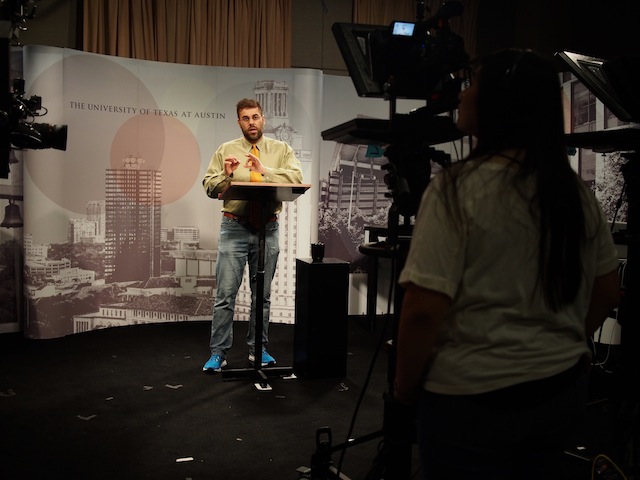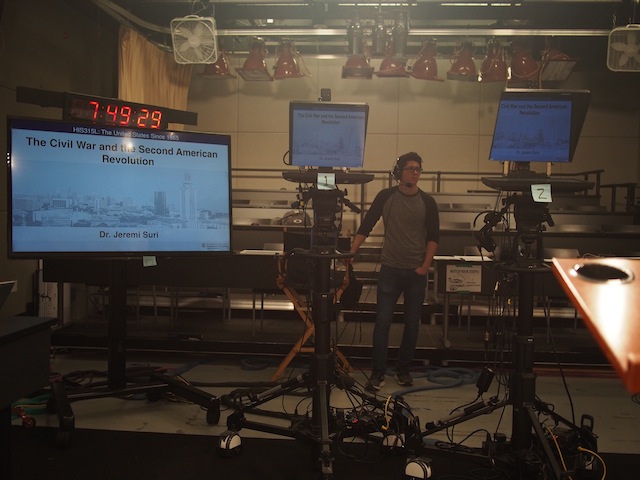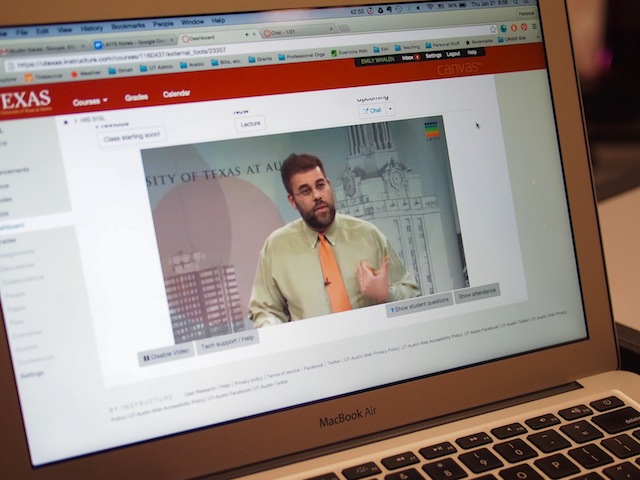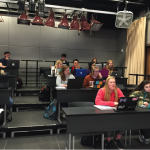Every year thousands of students take introductory courses in U.S. History at UT Austin. This spring Prof Jeremi Suri is experimenting with an online version of the U.S. History since 1865 survey course. He and his teaching assistants, Cali Slair, Carl Forsberg, Shery Chanis, and Emily Whalen will blog about the experience of digital teaching for readers of Not Even Past.
By Jeremi Suri
This semester we are experimenting with a new online version of the bread-and-butter undergraduate survey course, “US History since 1865.” This is not a MOOC. It is an effort to use digital tools and online delivery to offer a course that will increase the rigor, fun, and participation among enrolled students. The course seeks to motivate students by bringing the material to them in accessible, thought-provoking, and creative ways. It asks them to actively engage with the material offered in lectures and to participate outside the lectures through online platforms, including a live chat, an “ask the professor” forum, and online office hours. Future posts will describe how each of these innovative online functions works and how the students use them.

Behind the scenes shot of Jeremi Suri delivering a lecture for the course. Courtesy of Joan Neuberger.
The course incorporates more primary documents, photos, recordings, videos, cartoons, and maps than I usually use in my traditional survey course — all delivered and accessed online. I deliver the lectures in a film studio in Mezes Hall on campus, and they are live streamed to students. Students will attend some live, in-class lectures on designated days, but they will all primarily participate by watching the lectures online each Tuesday and Thursday morning, encountering history as a serious learning experience from the laptop screens in their dorm rooms. It is time to consider that learning can indeed work best today in that personal setting, rather than a musty old lecture hall.
The course is built around about 150 pages of assigned reading each week and twice weekly lectures. Each lecture includes a mix of fire-and-brimstone preaching, Socratic questioning, and light entertainment. We want the students to enjoy watching their screens. They should feel included in real-time discussions about the presented material, and they should feel free to ask questions and pursue their interests.
Assessments of student work include a test of their listening within each lecture, weekly response papers on the assigned reading, and exams. Students will get frequent feedback on their comprehension of key concepts, their interpretation of major events, and their written expression through the online platform. They will also have increased opportunities to communicate with teaching assistants and the professor — both online and in-person.
The goal of this teaching experiment is to raise the quality of the history survey and re-energize it for a new generation of students. If this experiment works, the course will be better and more popular than ever. If it works, the online platform will bring history alive for our undergraduates. That is the fundamental mission for a top history department and a top research university in the twenty-first century. US History Online is a more rigorous and fun history for a new generation.
Take a look at the course syllabus here.
All images were taken on January 21, 2016, by Joan Neuberger.





